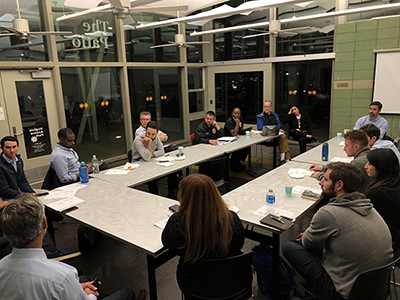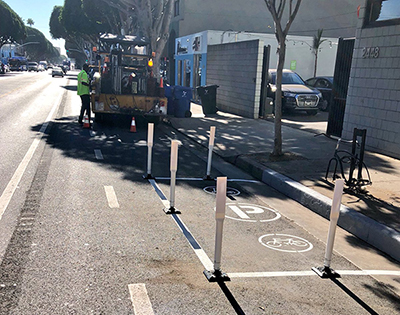3 Month Update on Santa Monica's Shared Mobility Pilot Program
December 20, 2018 1:45 PM
by

With roughly 150,000 rides in November 2018 alone, the shared mobility revolution is continuing to unfold in Santa Monica, with residents and visitors increasingly adapting to a wide variety of sustainable and convenient transportation options as the City develops a new model of regulating innovative mobility companies while protecting public safety, advancing our efforts to become a truly multi-modal community. Three months since the September 2018 launch of Santa Monica’s Shared Mobility Pilot Program, the City is evaluating initial data from operators, working to enhance compliance with program rules and safety requirements, soliciting community input, and redesigning public infrastructure to improve parking behavior and keep sidewalks clear.
The City selected four operators—Bird, Jump, Lime, and Lyft. Bird and Lime are operating with an allocation of 750 e-scooters, Jump with 500 e-bikes and 250 scooters, and Lyft with 250 scooters. Lyft was unable to launch their e-bikes within the first 30-days as was established in the pilot regulations and has notified the city they will not operate e-bikes in the pilot program. The program’s operators are required to operate their shared mobility systems per the terms of the program’s Administrative Regulations, which prioritize requirements for safety and program
Data and Device Utilization:
As a key program component, the City receives data (Mobility Data Specification or MDS) from each operator necessary to monitor overall device utilization— the number of trips, per number of devices, per day. The data specification was developed by Los Angeles Department of Transportation with significant input from Santa Monica City staff, in collaboration with other cities including Austin, San Francisco, and Seattle, and with feedback from numerous shared mobility operators.
The City began receiving validated data from the operators on November 1, 2018, continues to work on data consistency with each operator. Staff is beginning to use the data to evaluate each operator’s ridership and fleet management practices. Early analysis of the data for November indicates the overall average device utilization in Santa Monica was roughly 2.0 rides/device/day.
Program Enforcement:
The program is cost-recovery and funds two temporary staff overseeing the program—a Program Administrator who is working with the operators to ensure that they comply with the Administrative Regulations and coordinating community feedback and input for the program, and a Code Enforcement Officer who is documenting, evaluating, and enforcing the Administrative Regulations. The Code Enforcement Officer has begun issuing citations to operators who violate the regulations and continues to work with the Public Works Department to impound devices that are creating Americans with Disabilities Act obstructions and hazards.
The Santa Monica Police Department continues to dedicate time each week to enforcing shared mobility-related traffic violations such as riding on the sidewalk, running stop signs, etc. Since September 2017, they have stopped 2,030 scooter riders and issued 1,211 citations for traffic-related violations.
Shared Mobility Community Advisory Committee:

The City has launched a Shared Mobility Community Advisory Committee, which is comprised of a diverse and balanced mix of mobility advocates, subject-matter experts, and concerned residents who have demonstrated a constructive, solution-oriented approach in their feedback. The Committee held its first meeting in late November 2018, with the four program operators represented, and will meet monthly over the course of the Pilot Program to begin to dig into specific issues and provide suggestions to improve the program.
Parking Zones:

Starting in September 2018, the City began installing dedicated Shared Mobility Parking Zones. To date, the City has installed 52 of these zones and plans to install another 40-50 in the coming months.

Pictured above are the current locations of Shared Mobility Parking Zones in Santa Monica.
The operators are adding these locations to their mobile apps and encouraging users to take advantage of these spaces in order to cut down on improperly parked devices. When the bulk of the planned parking zones are installed, the City will work with the operators to implement programs that guide user parking through incentives and disincentives.
What’s Next:
In the coming months, the City will continue to monitor and evaluate the program operators and enforce violations in accordance with the Program Administrative Regulations. The City will continue to create dedicated parking zones throughout Santa Monica and advance efforts with the operators to implement and test new tools to guide user behavior, such as interactive education through the mobile apps, community rating systems, tip sensors, parking incentive
Additionally, the City and operators will begin conducting regular user surveys throughout the course of the Pilot to better understand who is riding, why they are riding, and how the program is functioning.
For more information about Santa Monica’s shared mobility program, visit smgov.net/sharedmobility.